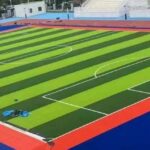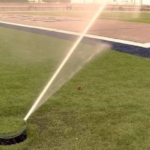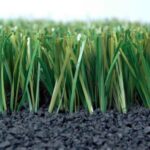Skiing is a fast, exciting sport.
Ski entertainment has always been popular with the masses; but there are seasonal, and regional.
An artificial ski turf is disrupting the business model-breaking ski market.
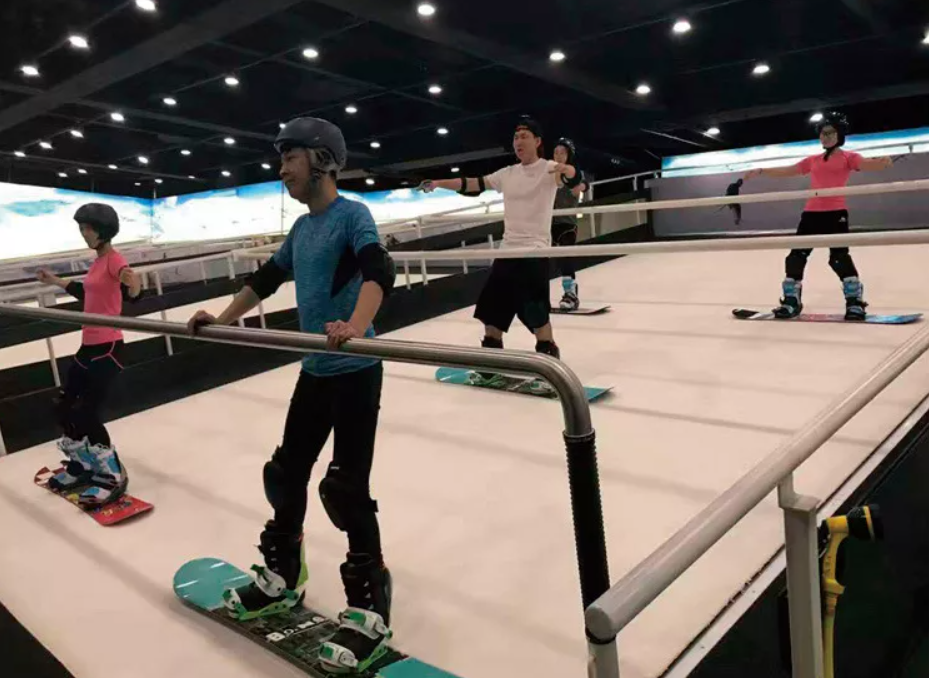
The background of artificial ski turf being researched
Skiing is a competitive sport in which athletes put their skis on the soles of their boots to perform speed, jumping, and downhill on the snow. Alpine skiing consists of downhill, slalom, and giant slalom (slalom). People are in a standing position, holding ski poles and foot skis and sliding on the snow surface. “Stand”, “board”, “snow” and “ski” are the key elements of skiing.
With the development of skiing (especially modern competitive skiing), the projects are constantly increasing and the fields are constantly expanding. The regular major events of the world competition are divided into alpine skiing, Nordic Skiing (Nordic Skiing, cross-country skiing, ski jumping), freestyle skiing, biathlon skiing, snowboarding, etc. Among them, tourist skiing is for the purpose of entertainment and fitness, and it is very lightly restricted by human factors. Men, women, young and old can glide easily and happily on the snow field and enjoy the endless fun of skiing.
At present, with the improvement of people’s living standards, skiing is loved by many ordinary people, and it has been highly respected around the world and has gradually become a part of people’s spare time. Due to environmental constraints, the field of skiing is still generally outdoor natural snow, which limits the development of skiing to a large extent. Later, an indoor ski field was developed to be used in conjunction with a ski trainer. By making snow indoors Indoor skiing can also be carried out in the same way, but the construction and use costs of indoor ski resorts are very expensive, and the resources consumed in the construction process are huge, which is not conducive to energy conservation and environmental protection.
Prevent natural snow from melting, which will inevitably consume a lot of power resources, and the indoor snow layer will become ice after repeated sliding pressure, losing the original buffering effect of the snow layer. Therefore, the buffering effect of the existing indoor skiing places is not good. , When people accidentally fall, due to its insufficient buffering effect, the injury is increased and the personal safety of people during the skiing process is affected.
An artificial ski turf can reduce or avoid the use of snow in indoor and outdoor ski resorts, greatly reduce the construction and use costs of ski resorts, save energy and environmental protection, and can realize indoor snow-free artificial skiing.
Artificial ski turf parameters and backing
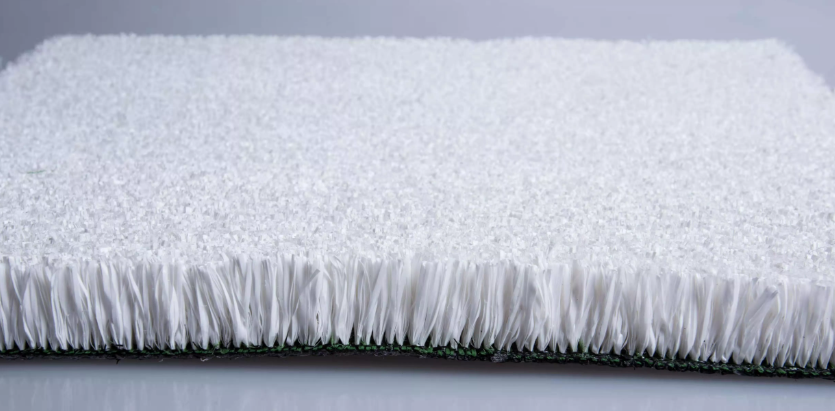
There is no artificial turf suitable for skiing in the prior art. After research and experiments, polyester filament non-woven fabric is used as the lawn base fabric, and artificial turf with a density of 42000-105000 clusters/square meter is planted on the non-woven fabric. Grass silk, the material of artificial grass silk is PP or PE or nylon, the dtex is 2000-17000D, and the height of artificial grass silk is 3-6cm. The glue layer has been verified by repeated tests, and the artificial ski turf of the present invention can completely replace the traditional natural snow. It only needs to fix the artificial ski turf of the present invention on the ground of the ski resort, whether it is indoors or outdoors. It is possible to perform simulated skiing on the artificial ski turf. The test also found that in winter, if some natural snow is sprinkled on the artificial ski turf, the skiing effect is better than that of the pure natural snow field; in the snow-free season, the artificial ski turf is The water mist is sprayed on it, and its skiing effect is better than that of the pure natural ski resort.
With the present invention, not only people’s skiing dream in a snow-free environment is fulfilled, but also indoor skiing is not restricted by weather, and more importantly, the construction cost and use of indoor and outdoor artificial ski resorts can be greatly reduced. cost, both energy saving and environmental protection. Since the ski layer formed on the artificial ski turf of the present invention is tufted from artificial grass filaments of a specific density and length, the difference in weight of skiers and the increase in the number of times of skiing have little effect on the artificial grass filaments, and they will not be as natural as natural grass filaments. Snow will melt and freeze, the buffering effect of artificial ski turf will not deteriorate, and maintenance work is very little. Personal safety when skiing; improves comfort while realizing skiing functions.
Usually, the backing layer is made of styrene-butadiene latex, and the more high-end artificial turf backing method is PU backing. The adhesive is one-time molding, fewer additives, and is more environmentally friendly. Compared with traditional natural ski resorts, the use of artificial ski turf to replace the original natural snow layer is convenient for production, and it is simple to lay indoors. It only needs to lay a layer of the above artificial ski turf on the blank field, which greatly reduces the cost of production. The production cost saves resources. In the process of use, since the artificial grass silk is made of PP, PE, or nylon, it will not melt due to temperature changes, so the maintenance cost is reduced, and in the field of artificial turf applications, it has created a new The chapter – skiing, is a milestone for the development of artificial turf.
A layer of the rubber buffer layer is evenly coated on the bottom surface of the adhesive layer, in order to ensure better buffer performance of the overall artificial ski turf.
There are drainage holes between adjacent artificial grass filaments. You can also choose to add natural snow on the artificial ski turf, but compared with the original natural ski resort, the amount of snow production is greatly reduced.
When the artificial ski turf is actually used, first of all, the ski area should be carefully cleaned cleaned to ensure that the ground is clean; secondly, the artificial ski turf should be affixed to the back of the artificial ski turf with a special adhesive, thereby laying the artificial ski turf on the ground evenly. The joints of two adjacent artificial ski turfs are spliced by seam cloth gluing to realize the laying of artificial ski turf in the entire ski resort.
After the artificial ski field is laid, simulated skiing can be performed on it according to the normal skiing method. In the snow season, if some natural snow is sprinkled on the artificial ski turf, the skiing effect is better than that of the pure natural ski field; In the snow-free season, spraying water mist on the artificial ski turf has a better skiing effect than the pure natural ski field.
Artificial ski turf not only creates a precedent for artificial turf in the field of skiing, but also greatly reduces the processing cost and consumption of resources compared with traditional indoor and outdoor natural ski resorts, and the labor and resources required for maintenance during use are also greatly reduced. It is of great significance to reduce costs and resources, improve environmental protection, and enhance cushioning performance while ensuring skiing on the lawn.

